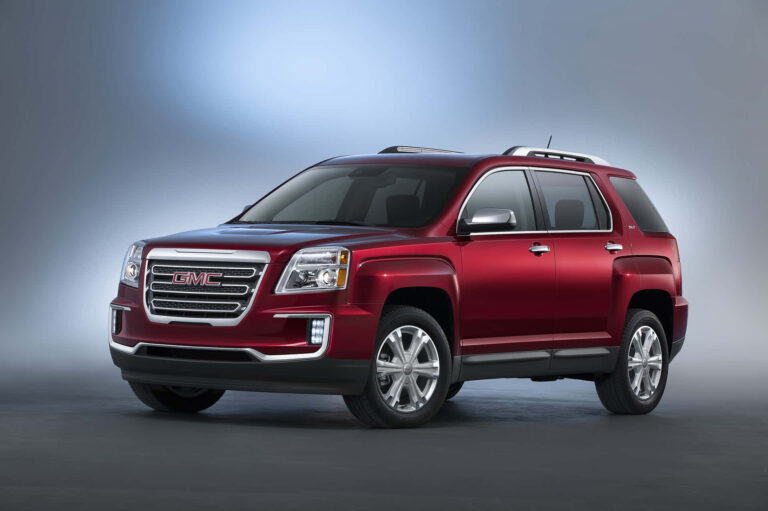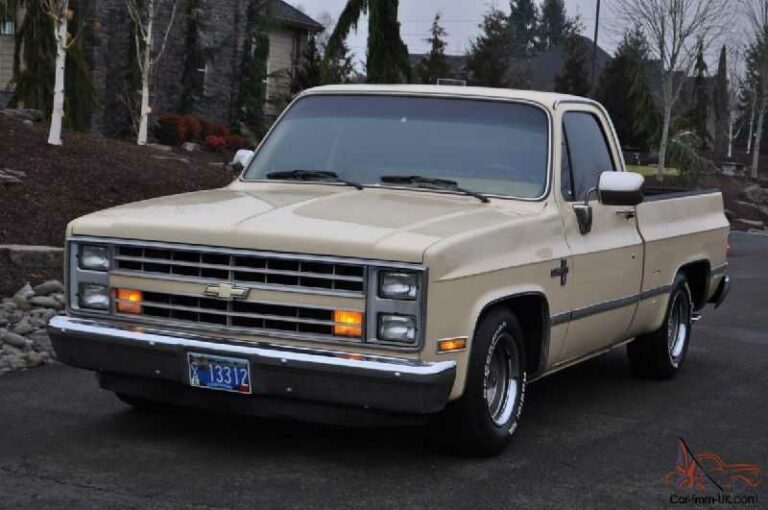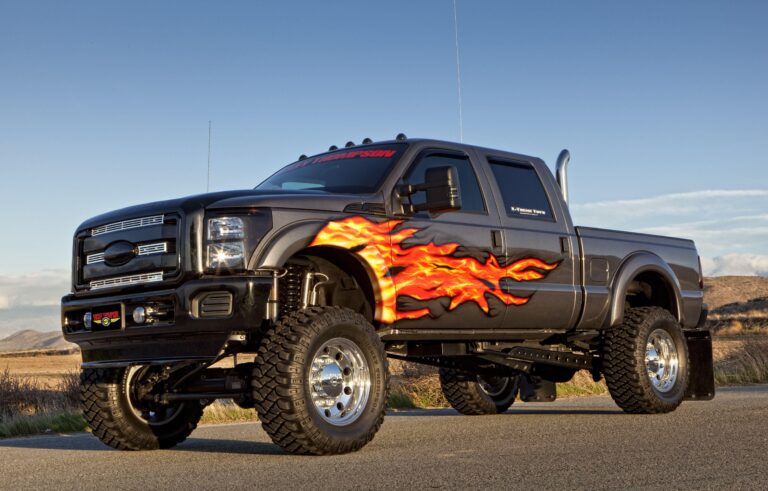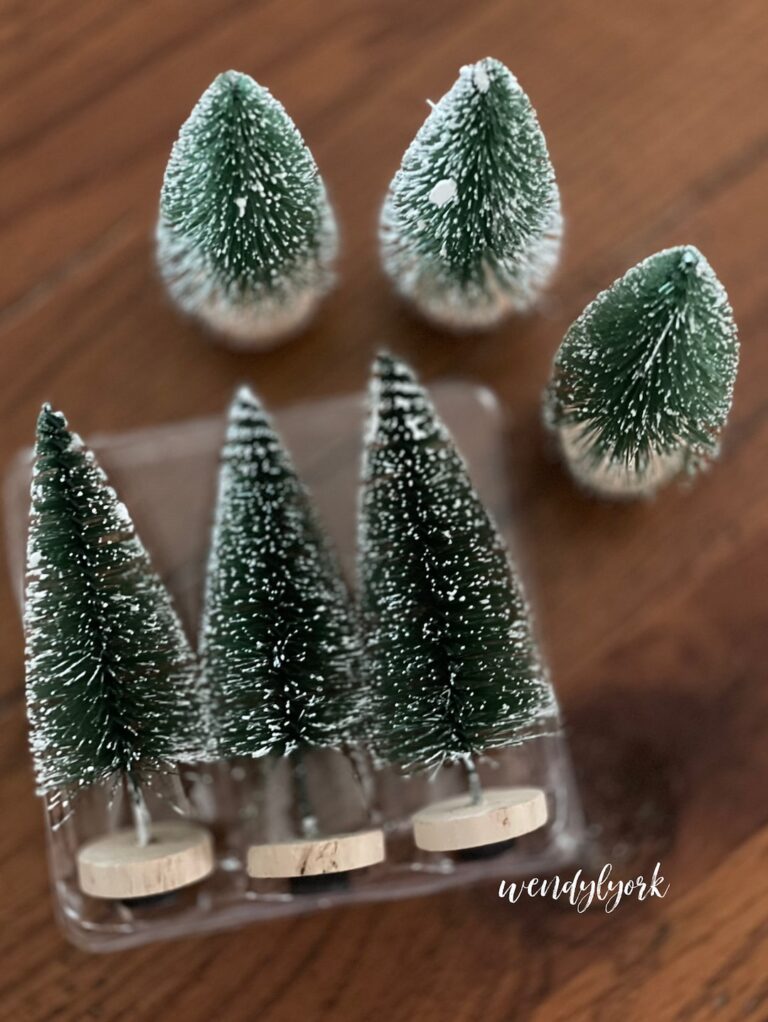U. S. A. Vintage Pickup Trucks: A Journey Through Automotive History and Enduring Appeal
U. S. A. Vintage Pickup Trucks: A Journey Through Automotive History and Enduring Appeal cars.truckstrend.com
Few vehicles evoke a stronger sense of Americana, rugged utility, and timeless design than the U. S. A. vintage pickup truck. These workhorses, once the backbone of farms, construction sites, and small businesses, have transc transcended their utilitarian origins to become cherished collectibles, showpieces, and beloved daily drivers. More than just old vehicles, vintage pickups are rolling pieces of history, representing eras of design innovation, manufacturing prowess, and the evolving spirit of American industry. This article delves into the world of U. S. A. vintage pickup trucks, exploring their enduring appeal, iconic models, practical considerations for ownership, and the vibrant culture surrounding them.
The Enduring Allure of Vintage Pickups
U. S. A. Vintage Pickup Trucks: A Journey Through Automotive History and Enduring Appeal
What is it about a vintage pickup that captures the imagination? Generally, "vintage" refers to trucks produced before the mid-1980s, with a strong emphasis on models from the 1930s through the 1970s. Their appeal is multifaceted:
- Nostalgia and Heritage: For many, these trucks are a tangible link to a simpler past, reminding them of family, classic movies, or a bygone era of craftsmanship.
- Distinctive Design: Unlike modern trucks that often prioritize aerodynamics and conformity, vintage pickups boast unique, often bold, styling cues. From the curvaceous fenders of the 1940s to the boxy, purposeful lines of the 1970s, each generation offers a unique aesthetic.
- Simplicity and Durability: Built with fewer complex electronics and often over-engineered mechanical components, vintage trucks are renowned for their robust construction and relatively straightforward maintenance, making them appealing to DIY enthusiasts.
- Customization Potential: Their straightforward platforms make them ideal canvases for customization, from sympathetic restorations to radical "restomods" that blend classic looks with modern performance.
- Community and Investment: Owning a vintage pickup connects you to a passionate community of enthusiasts. Furthermore, well-maintained or expertly restored examples can appreciate in value, making them a potential investment.

Key Eras and Iconic Models
The history of American pickup trucks is rich with innovation and memorable designs. Here’s a look at some defining eras and their most iconic models:
Early Utility and Post-War Boom (1930s-1950s)
This period saw the pickup evolve from a modified car chassis into a dedicated work vehicle. The post-war economic boom fueled demand, leading to more comfortable and stylish designs.
- Ford F-Series (F-1, 1948-1952): The original F-Series marked a pivotal moment, shifting Ford’s truck line from car-based designs to dedicated truck platforms. The F-1 is instantly recognizable with its wide grille and prominent fenders.
- Chevrolet Advance-Design (1947-1955): Chevrolet’s answer to the F-Series, these trucks were highly popular for their sleek, integrated styling, which looked more cohesive than previous designs. Models like the 3100 are highly sought after.
- Dodge B-Series (1948-1953): Known for their "Pilot-House" cabs that offered improved visibility, these trucks were rugged and practical, often featuring Fluid Drive transmissions.
Mid-Century Modern and Style Evolution (1955-1966)
As America prospered, trucks began to incorporate more car-like features, including V8 engines, automatic transmissions, and two-tone paint schemes, blurring the lines between work and leisure.
- Chevrolet Task Force (1955-1959): Featuring the iconic "Cameo Carrier" (a precursor to the modern car-like truck), these trucks introduced wrap-around windshields and more integrated styling. The Apache series continued this trend.
- Ford F-100 (Second & Third Gen, 1953-1960, 1961-1966): The 1953 F-100 introduced a more modern, streamlined body and a new flathead V8. The 1961-1966 "Unibody" models, where the cab and bed were one integrated piece, are particularly distinctive, though less common due to structural issues.
- Dodge D-Series (1961-1971): These trucks featured unique styling, particularly the "Sweptline" beds, and were known for their sturdy Slant-6 engines and V8 options.
The Muscle Truck Era (Late 1960s-1970s)
With the rise of muscle cars, pickups also began to offer more powerful engine options and amenities, becoming capable of both work and recreation.
- Chevrolet C/K Series (1967-1972 & 1973-1987): The 1967-1972 "Action Line" trucks are arguably some of the most popular vintage pickups today, beloved for their clean lines and wide range of configurations. The subsequent "Square Body" generation (1973-1987) defined the look of the modern truck for decades.
- Ford F-Series (Fourth & Fifth Gen, 1967-1972 & 1973-1979): Ford’s response to Chevy’s dominance, these trucks offered increasingly luxurious trim levels and powerful engine options, cementing the F-Series as America’s best-selling truck.
- Dodge D-Series/Adventurer (Late 1960s-1970s): Dodge continued to produce robust trucks, with models like the "Lil’ Red Express" (late 70s) becoming a cult classic, showcasing high-performance V8s in a truck chassis.
Buying Your Dream Vintage Pickup: A Practical Guide
Acquiring a vintage pickup requires careful consideration and research.
Where to Look
- Online Marketplaces: Websites like eBay Motors, Craigslist, Facebook Marketplace, and specialized classic car sites (e.g., Hemmings, Bring a Trailer) are excellent starting points.
- Auctions: Major automotive auctions (Mecum, Barrett-Jackson) often feature high-end restored trucks, while local auctions can yield project vehicles.
- Specialized Dealers: Reputable classic car dealers often have a curated selection of vintage trucks, often at a premium but with some level of vetting.
- Car Shows & Swap Meets: These events are great for seeing trucks in person and connecting with sellers.
What to Inspect
Always prioritize a thorough inspection, ideally with a trusted mechanic experienced in vintage vehicles.
- Rust: The ultimate enemy. Check frame rails, cab corners, rocker panels, floorboards, bed mounts, and fender wells. Surface rust is manageable; structural rust is a major red flag.
- Frame Integrity: Look for bends, cracks, or signs of accident repair. A straight, solid frame is crucial.
- Engine & Drivetrain: Check for leaks, unusual noises, smoke from the exhaust, and proper shifting (if automatic). A compression test can reveal engine health.
- Brakes & Steering: Test for responsiveness, pulling, or excessive play. These are critical safety components.
- Electrical System: Ensure lights, gauges, wipers, and heater work. Wiring issues can be complex and costly.
- Interior: Assess the condition of the seats, dashboard, door panels, and headliner. These can be expensive to re-do.
- Paperwork: Verify the title, VIN, and any service records.
Setting a Budget
Beyond the purchase price, factor in:
- Restoration/Repair Costs: Unless buying a fully restored truck, anticipate spending on mechanical, body, and interior work. This can range from a few thousand for minor fixes to tens of thousands for a full restoration.
- Parts Availability: While many reproduction parts exist, some components can be rare and costly.
- Insurance & Registration: Vintage vehicle insurance is often specialized and can be more affordable than modern car insurance.
- Fuel & Maintenance: Older engines are less fuel-efficient and require regular attention.
Restoration vs. Preservation vs. Customization
Once you own a vintage pickup, you’ll decide its future:
- Restoration: The goal is to return the truck to its original factory condition, using period-correct parts, colors, and finishes. This is often the most expensive and time-consuming route, appealing to purists and collectors.
- Preservation (Survivor): This approach focuses on maintaining the truck in its current, original condition, addressing only essential repairs to keep it roadworthy. The patina and wear are celebrated as part of its history.
- Customization (Restomod): This popular trend blends classic aesthetics with modern performance and comfort. This might involve swapping in a modern engine (e.g., LS swap), upgrading brakes, adding power steering, air conditioning, and a modern suspension, all while retaining the vintage exterior. This offers the best of both worlds: classic looks with modern driveability.
Common Challenges and Solutions
Owning a vintage truck isn’t without its quirks, but solutions are often readily available.
- Parts Scarcity: While common models have good aftermarket support, rarer parts might require scouring junkyards, online forums, or specialized vintage parts suppliers. Reproduction parts are a lifesaver for body panels, trim, and some mechanicals.
- Finding Knowledgeable Mechanics: Not all modern shops are equipped to work on older vehicles. Seek out mechanics specializing in classics or those with a passion for vintage iron. Online forums and clubs are great resources for recommendations.
- Rust Remediation: Prevention is key (proper storage, rustproofing). For existing rust, skilled bodywork or panel replacement is necessary.
- Lack of Modern Safety Features: Vintage trucks lack airbags, ABS, and crumple zones. Solutions include upgrading to disc brakes, adding seatbelts, improving lighting, and considering a stronger steering column.
- Fuel Economy: Expect lower MPG. Regular maintenance, proper tuning, and modern engine swaps (for restomods) can improve efficiency.
Maintenance Tips for Vintage Truck Owners
To keep your vintage pickup running smoothly:
- Regular Fluid Checks: Oil, transmission fluid, coolant, brake fluid – older vehicles are more prone to leaks.
- Grease and Lubricate: Many older trucks have numerous grease points that need regular attention.
- Tire Pressure: Maintain correct pressure for safety and tire longevity.
- Rust Prevention: Keep the truck clean and dry. Consider rust inhibitors or undercoating, especially if driving in wet climates.
- Proper Storage: If not driven regularly, store the truck in a dry, well-ventilated area, ideally on a battery tender.
- Join a Community: Online forums, local clubs, and car shows offer invaluable advice and camaraderie.
Estimated Price Guide for Popular U. S. A. Vintage Pickup Trucks
The value of a vintage pickup truck varies significantly based on make, model, year, originality, condition (from "project" to "show-ready"), and regional demand. The table below provides general estimated price ranges for popular models in average to good driver condition, not concours-level restorations or neglected projects.
| Make/Model | Typical Years | Condition: Project/Poor | Condition: Driver/Good | Condition: Restored/Excellent |
|---|---|---|---|---|
| Chevrolet C/K Series | 1967-1972 (C10) | $5,000 – $15,000 | $20,000 – $45,000 | $50,000 – $100,000+ |
| Ford F-Series | 1967-1979 (F-100) | $4,000 – $12,000 | $18,000 – $40,000 | $45,000 – $90,000+ |
| Chevrolet Advance-Design | 1947-1955 (3100) | $6,000 – $18,000 | $25,000 – $55,000 | $60,000 – $120,000+ |
| Ford F-Series (F-1/F-100) | 1948-1956 | $5,000 – $16,000 | $22,000 – $50,000 | $55,000 – $110,000+ |
| Chevrolet Task Force | 1955-1959 | $5,000 – $17,000 | $23,000 – $52,000 | $58,000 – $115,000+ |
| Dodge D-Series | 1961-1971 | $3,000 – $10,000 | $15,000 – $35,000 | $40,000 – $80,000+ |
| International Harvester | 1960s-1970s | $3,000 – $9,000 | $12,000 – $30,000 | $35,000 – $70,000+ |
Note: Prices are estimates and subject to market fluctuations, regional differences, specific model variants (e.g., short bed, long bed, specific engine), and the level of originality or customization.
Frequently Asked Questions (FAQ)
Q: Are vintage pickup trucks reliable for daily driving?
A: It depends on the truck’s condition and how it’s been maintained or restored. A well-sorted, possibly "restomodded" vintage truck can be quite reliable. An unrestored "survivor" will likely require more frequent attention.
Q: Are parts hard to find for vintage pickup trucks?
A: For popular models like the Chevy C10 or Ford F-Series, parts availability is generally excellent thanks to a robust aftermarket for reproduction parts and used components. Rarer models might require more diligent searching.
Q: What is a "restomod"?
A: A "restomod" is a restoration combined with modern modifications. The truck retains its classic exterior appearance but features updated components like a modern engine and transmission, disc brakes, power steering, and air conditioning for improved performance, safety, and comfort.
Q: Are vintage trucks good investments?
A: While some models have seen significant appreciation, not all vintage trucks are guaranteed investments. Factors like rarity, originality, condition, and market demand play a huge role. Generally, well-maintained or professionally restored popular models tend to hold or increase their value.
Q: What’s the best vintage truck for a beginner?
A: Models with strong aftermarket support and simpler mechanics are ideal for beginners. The Chevrolet C10 (1967-1972 or 1973-1987) and Ford F-Series (1967-1979) are often recommended due to their popularity, parts availability, and robust online communities.
Conclusion
U. S. A. vintage pickup trucks are more than just modes of transportation; they are cultural icons, testaments to American ingenuity, and passion projects for countless enthusiasts. Whether you’re drawn to their rugged utility, classic aesthetics, or the simple joy of working on a piece of history, the world of vintage pickups offers a rewarding journey. From the early workhorses to the stylish cruisers, each truck tells a story, carrying with it the spirit of an era. Owning one is an invitation to connect with history, join a vibrant community, and experience the enduring appeal of American automotive heritage, one mile at a time.





